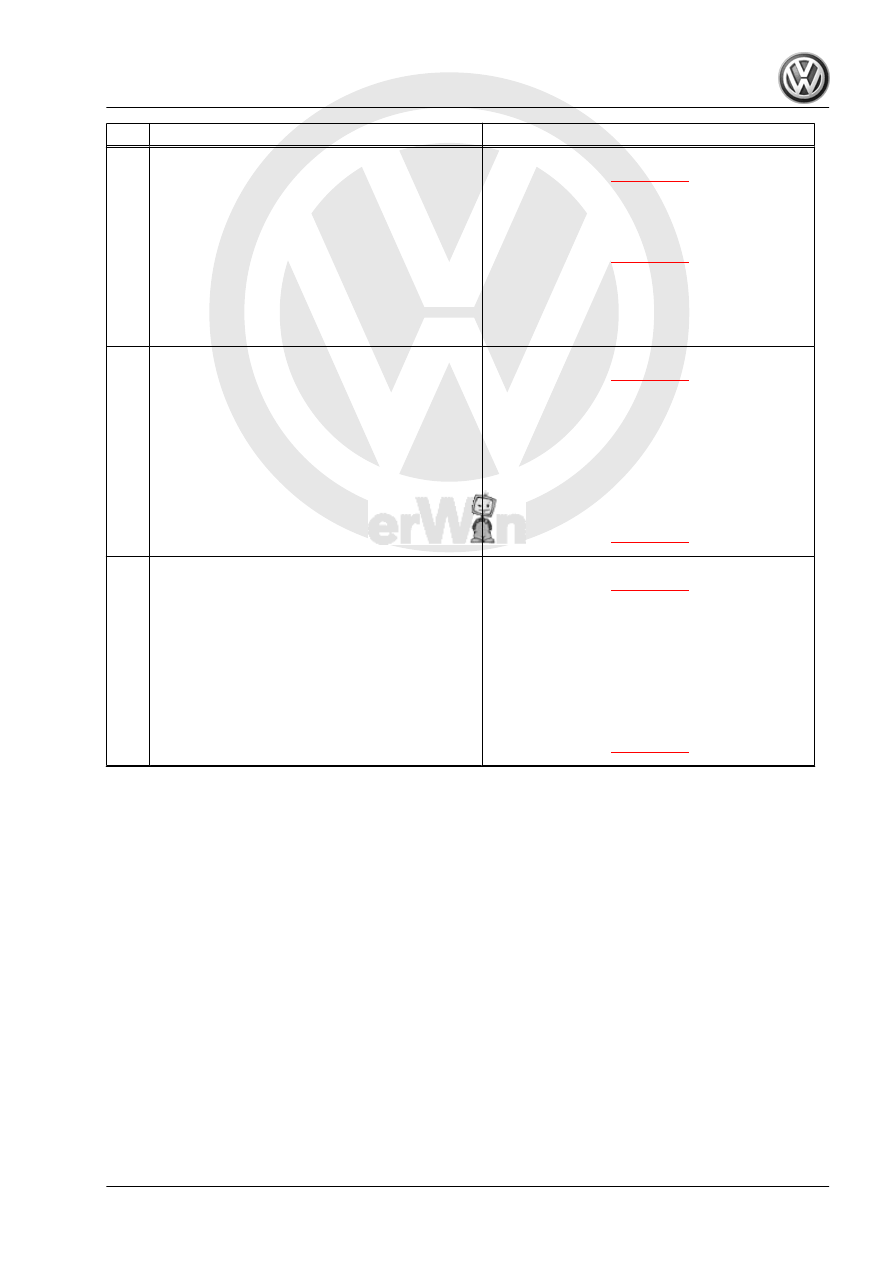Volkswagen Golf / Golf GTI / Golf Variant. Manual - part 197

Step
Procedure
Result / Action to Take
2
• IGNITION: OFF.
• DISCONNECT: Suspected Cam Adjustment
Actuator(s) harness connector.
• CHECK: Suspected Cam Adjustment Actuator
(s) component connector terminals 1 to 2 for
resistance. Refer to appropriate wiring dia‐
gram.
• SPECIFIED VALUE: 7 – 10 Ω (@ approx. 20°
C).
– Was Value obtained?
– YES:
– NO:
♦ REPLACE: Cam Adjustment Actuator(s) . Re‐
fer to appropriate repair manual.
3
• IGNITION: ON.
• CHECK: Suspected Cam Adjustment Actuator
(s) harness connector terminal 2 to ground for
voltage. Refer to appropriate wiring diagram.
• IGNITION: OFF.
• SPECIFIED VALUE: Battery voltage.
– Was Value obtained?
– YES:
– NO:
♦ PERFORM: Visual Inspection of wiring and
component.
♦ CHECK: Wiring for open, high resistance,
short or harness connector for damage, corro‐
sion, loose or broken terminals.
♦ REPAIR: Faulty wiring or connector.
♦ GO TO: Step 5
4
• REMOVE: Engine Control Module - J623- .
Refer to appropriate repair manual.
• CHECK: Suspected Cam Adjustment Actuator
(s) harness connector terminal 1 to the Engine
Control Module - J623- harness connector for
resistance. Refer to appropriate wiring dia‐
gram.
• SPECIFIED VALUE: 0.5 Ω (± 0.3 Ω).
– Was Value obtained?
– YES:
– NO:
♦ PERFORM: Visual Inspection of wiring and
component.
♦ CHECK: Wiring for open, high resistance,
short or harness connector for damage, corro‐
sion, loose or broken terminals.
♦ REPAIR: Faulty wiring or connector.
♦ GO TO: Step 5
GTI 2014 ➤
Generic Scan Tool - Edition 04.2015
3. Diagnosis and Testing
461